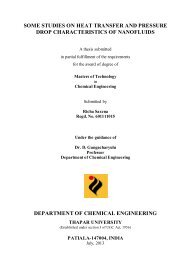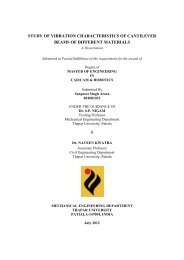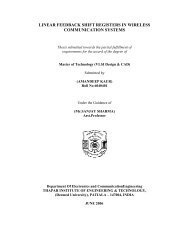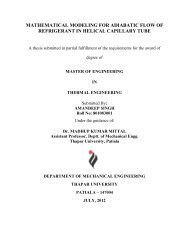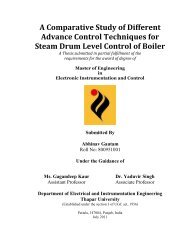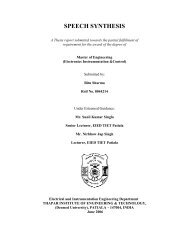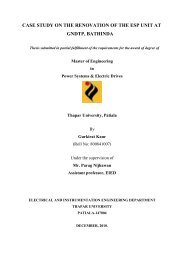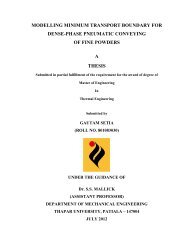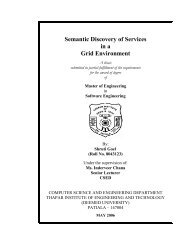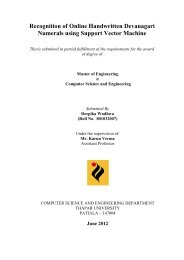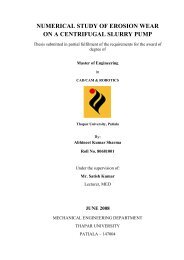from indigenous fermented foods and human gut ... - Thapar University
from indigenous fermented foods and human gut ... - Thapar University
from indigenous fermented foods and human gut ... - Thapar University
You also want an ePaper? Increase the reach of your titles
YUMPU automatically turns print PDFs into web optimized ePapers that Google loves.
71<br />
Chapter III Material <strong>and</strong> methods<br />
micro centrifuge tubes were frozen <strong>and</strong> the bottom of the tubes containing cell pellets was<br />
removed. Cell pellets were digested with 1 ml of 3 M HNO3, vortexed vigorously <strong>and</strong><br />
incubated at an ambient temperature overnight. Concentrations of intracellular K + in the cell<br />
pellets were determined by ICP (Perkin Elmer-Sciex Elan DRC Plus, USA).<br />
3.12.4 Measurement of intracellular ATP content<br />
Extracellular ATP levels of bacteriocins treated S. typhimurium ATCC 19585 was<br />
determined as described previously (Bruno, 1993) with some modifications. Cells were<br />
suspended in 2.5 mM sodium phosphate buffer (pH 7.0) with 10 mM glucose <strong>and</strong> 100 µg/ml<br />
of bacteriocin (2,800 AU/ml). At various times, 20 ml samples were taken to determine the<br />
extracellular ATP concentrations, respectively. 20 ml samples were immediately mixed with<br />
80 ml of dimethyl sulfoxide. 50 ml samples were then spun down immediately for 2 min, <strong>and</strong><br />
20 ml of the supernatant was removed <strong>and</strong> mixed with 80 ml of dimethyl sulfoxide. All<br />
samples were diluted with 5 ml of sterile deionised water. ATP concentrations were<br />
determined by inactivation the luciferin-luciferase enzyme assay.<br />
3.13 Inhibition of pathogen by bacteriocin in a simulated /laboratory prepared food<br />
matrix<br />
Fresh vegetable samples like cucumber, radish, carrot <strong>and</strong> tomato were purchased at<br />
local supermarkets <strong>and</strong> kept under refrigeration for no longer than 24 h until use. These<br />
vegetables were sliced (ca. 1.0 cm in size) <strong>and</strong> artificially contaminated (10 µl per piece)<br />
with a sterile saline solution suspension of S. typhimurium ATCC 19585 (2.0 x10 8 CFU/ml)<br />
previously grown overnight in brain heart infusion infusion broth at 37 °C. Following<br />
inoculation, vegetables were allowed to dry for 1 h at room temperature <strong>and</strong> then were treated<br />
by immersion for 5 min at room temperature in 5 ml of sterile distilled water (controls) or<br />
distilled water containing bacteriocin (25-100 µg/ml). After immersion treatments, excess<br />
immersion solution was drained on sterile filter paper, <strong>and</strong> samples were stored in sterile



